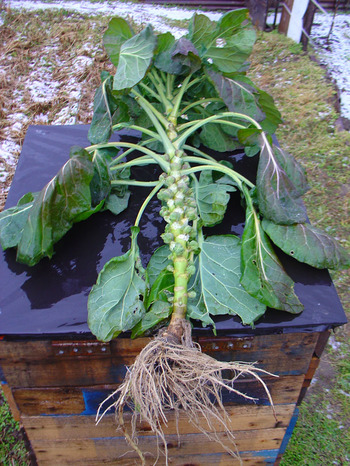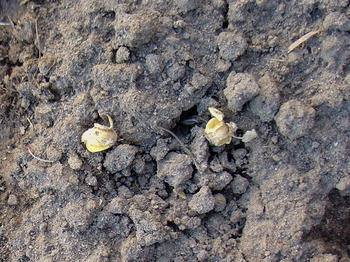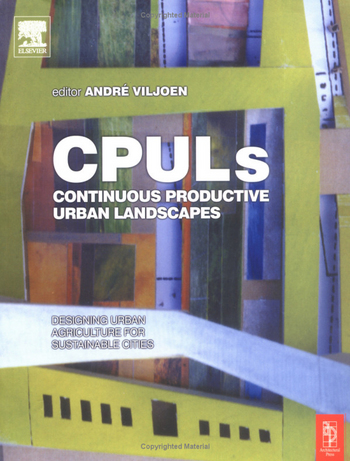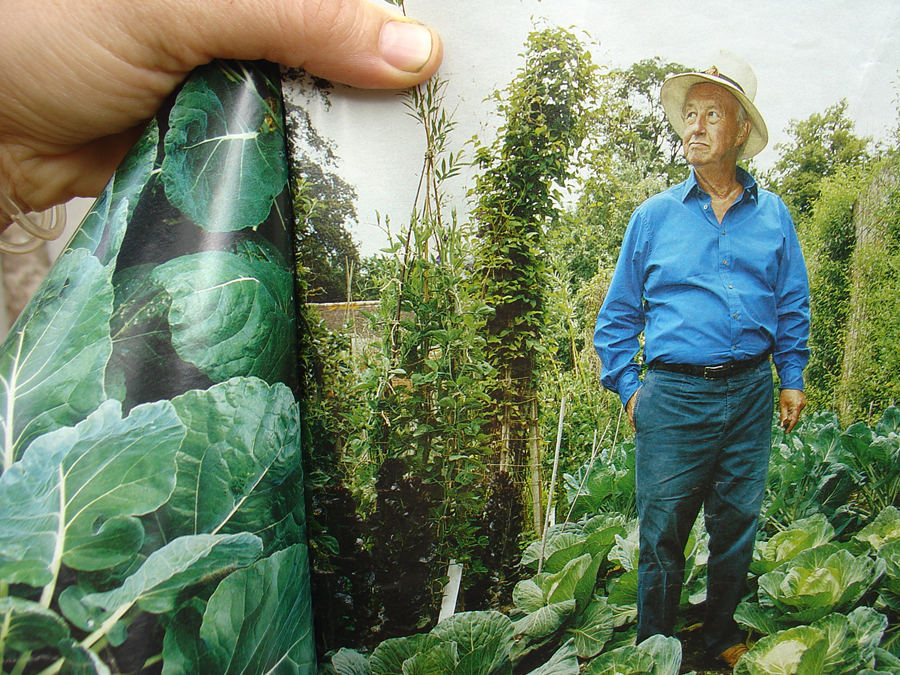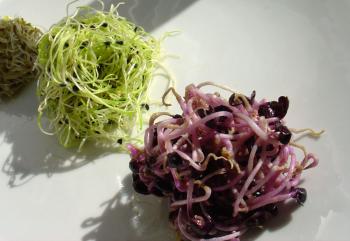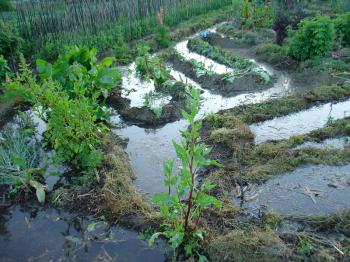Desertification
July 29, 2008
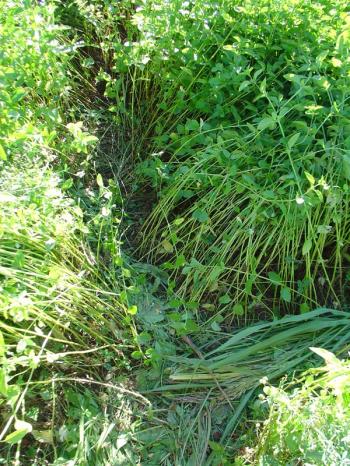
But before there was desertification, there was humidification. A path sketched through the bergamot.
This is a painful entry for me to write because I’m suffering from a garden identity crisis. I started out this morning wanting to say something about the humidifying effect of planting green manures/cover crops and the desertification that ensues when I remove these covers to plant the ‘real’ crops. These eventually grow big, fill out, provide shade, and re-humidify the soil again. But in my garden ‘desertification’ has taken on another meaning, namely that I regularly desert my garden for months at a time, often in planting seasons, and allow the green manures to grow too large, requiring labour intensive transplant therapy upon my return.
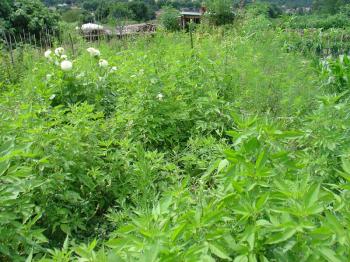
Before: a beautiful yet unproductive wilderness, or a garden gone to hell in a handbasket?
At this time of the year down at the kitchen gardens, everyone is enjoying harvesting an abundance of summer produce. Neighbour Pedro has grown monster pumpkins, big and round like his wife. Row after row of only 12 sorts of vegetables border my 1,50 meter high mess of… cover crop. On the other side, Sidi El Gouche is already into his third harvest. He’s digging up crates of potatoes and planting swimming pool-sized beds of coriander in the shade of his fig. He’s got crispy croquante lettuces, plenty of onions and corn, and the watermelons trail along the back end at the edge of Caizergue’s sand field. Bordering my hot mess of permaculture, El Gouche has three long rows of heavily laden raspberries lazily leaning against bamboo racks.
And I have alfalfa. And fuqn excellent soil.
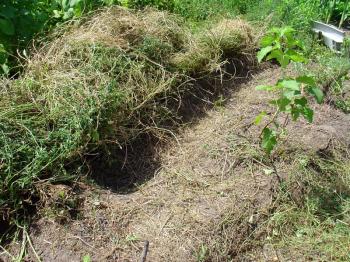
After rolling back only two rows of alfalfa, I’ve produced a hay mat and a desert. Once my ‘real crop’ seedlings can see over the top, I’ll put the flattened hay mat back on the beds to prevent weeds and to rot into new soil.
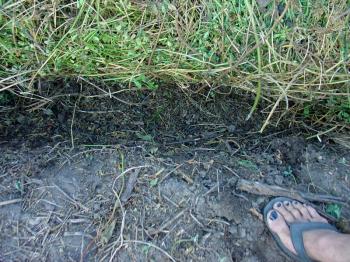
Under the alfalfa mat, pure rotted goodness
When I left the garden last March, it was still too cold to plant vegetable seedlings and I had strewn alfalfa to grow as a dirt-enriching live mulch. You reap what you sow, and in my nearly 160m2 of kitchen garden, with my obsession for soil health and richesse, I had sowed alfalfa amidst the plants that I abandon each time the work calls me back up North; dahlias, rhubarb, sorrel, horseradish, strawberries, raspberries, currants, lavender, the other flowers, the other herbs, and the stick forests of mint and bergamot that line my water channels.
I thought I’d be back a bit after the Ice Saints to plant the seedlings of proper vegetables that humans like to eat, but my projects kept me away for more than 4 months. So when I arrived mid July, I encountered a jungle of alfalfa tangle so thick that I was unable to walk through it. On the upside, there were also clouds of bees feasting on beautiful blue and purple flowers and because the ‘weeds’ I had planted had grown so big, they had done a good deal of ‘pre-weeding’ by elbowing out the others. I should also mention that treading on alfalfa and bergamot produces wafts of smile-inducing summer perfume.
Each time I return after deserting my garden for a long time, it’s always the same. My neighbours turn up to check out my reaction to the abundant plant growth, and my friends roll their eyes and say, ‘I knew you’d call it that’, each time I use the word biomass when referring to the intentionally planted weeds I mean alfalfa.
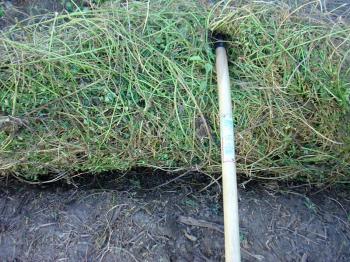
The bottom of the alfalfa roll looks like lace. Fresh, it’s 60cm thick. Dried, 20cm. It will rot away in a season increasing soil by 5cm.
Although beautiful, my garden is not producing much in the way of edibles because I had neglected to plant any in April (or May, or June). Instead I planted alfalfa in March. And this I repeatedly tell myself, so as not to feel terrible that my harvest this summer consists essentially of one hella fat wad of hay mulch and good soil (well there’s also the berries and the sorrel). The neighbours stand around asking when I’m going to put all that fabulous soil to good use.
The garden is lush, and my feet get wet at the bottom of the plant canopy, like in a miniature rain forest. Because I have free and unlimited water (for the time being) and neighbour Sidi El Gouche willing to water for me (Insha’Allah), I cannot be certain, but I believe that planting this way increases the soil’s ability to retain moisture. Indeed, it is hummus-rich and still wet. Under the plant cover, the sticks I laid down on the yet unplanted beds have rotted and kept the shaded beds completely weed-free. The tilth is exceptional and you could dig with your bare hands if you wanted to. Before planting the seedlings, I part a path through the biomass with my arm and roll back the alfalfa into a giant, ‘felted plant mat’. The ‘other’ desertification of my garden begins and it sucks up all of my upper body strength.
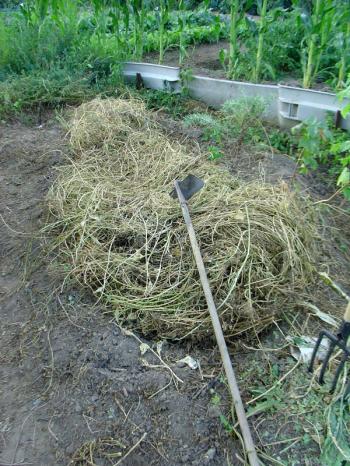
The rolled alfalfa hay mat drying in the canal, in the distance, Pedro’s productive potager
Maybe I should simply accept that by deserting my garden for so long, a harvest comprised of experiments with ground covers, live-mulching, humus richesse and huge quantities of organically grown and artisanally hand-rolled hay matting is an excellent harvest. But it remains embarrassing that the three gardeners whose plots border mine, and who essentially grow hydroponically with chemical fertilisers on pale coloured sand, produce basket upon basket of vegetables and fruit. Delicious vegetables and fruit.
Which they most generously give to me; bag upon bag of testerone-steeped chard, lettuce, sweet onions, and monster zucchinos. And I have nothing to give them in return, unless you consider the opportunity to gossip about the crazy lady and her deserted permaculture garden a generous trade. Comment dit-on ‘potager conceptuel’?
In the 4 months that it needs me most, I regularly abandon my garden to play busy-busy 1100 kilometers away. I wink and call my garden a permaculture garden, but lest I give it a bad name, I should probably state that permaculture does not mean deserting your plantings and letting your garden go to pot.
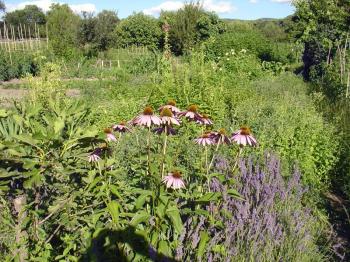
Self portrait w/garden going to pot. Jolie, non?
debra at 12:56 | Comments (8) | post to del.icio.us
The Occitanian slug lounge
July 27, 2008
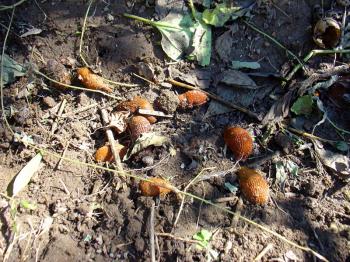 There are more than 12 slugs in this picture
There are more than 12 slugs in this picture
Today I moved a pile of recently weeded Jerusalem Artichokes and uncovered a sexy slug lounge. I counted more than 24 of them in a stretch of 60 cm, dressed up like little orange hedgehogs, one wearing a tiger print, plus a zillion baby slugs about to be born. Enormement degoûtant. They were taking a disco nap so that later tonight when they got the munchies, they could snarf up my micro mizuna lettuces!
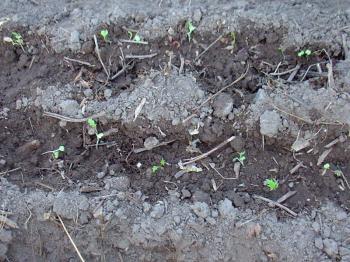
There are less than 12 seedlings in this picture
I’m hoping that by simply clearing the vegetation they will get the hint to go somewhere more fashionable. Kristi thinks I should set out a plate of beer to drown them in and then let the birds have a party. I’m filled with emotions beyond the scope of the situation and feel somewhat betrayed by permaculture.
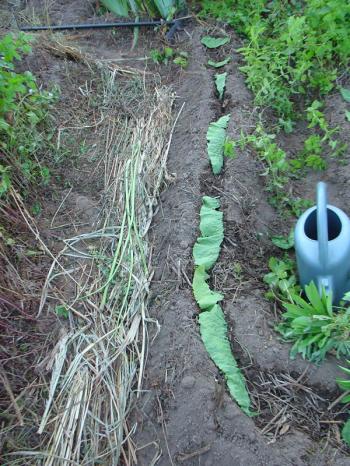
Hope slugs don’t like horseradish leaves…
debra at 0:48 | Comments (5) | post to del.icio.us
Biomass revisited
July 20, 2008
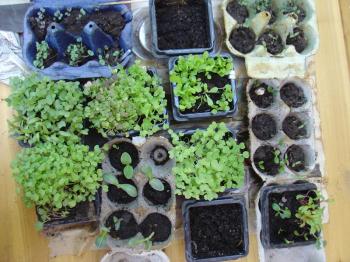
A travel arrangement for seedlings
Some days ago I filled my tiny travel trolley 75% with winter veg seedlings leftover from the raised beds up in the Polar Circle, and left the Land of the Pitiful Sun to return to the Occitanian kitchen garden. While the unpractical but pretty summer dresses & sandals, and the nomadic office with it’s space-absorbing cables were unceremoniously crammed into the remaining nook and cranny, the seedlings of several varieties of broccoli and kales, two sorts of precious artichokes (one early, one late), handy edible flowers and my beloved leafy greens were all delicately packed urban-style into a shoe box, formerly of the pretty summer sandals.
She thinks that my baggage is funny and I think that she is funny.
In the months of my absence the garden has produced a teeming hot mess of biomass. Before I left in April I had planted alfalfa and phaecelie to keep out the weeds and nourish the soil, but it’s something of a running joke between my friends that I call the vegetation obscuring the contours of the garden, intentional biomass and they call it weeds. On some level I can understand the confusion, but the alfalfa is blooming in blues and purples, the mints and bergamot burgeoning in the canals waft head-clearing scents every time I brush up against them, swarms of bees are a’buzz on the profusion of flowers, and under all the canopy I found my indulgence of dahlias, planted as markers at the ends of the canals.
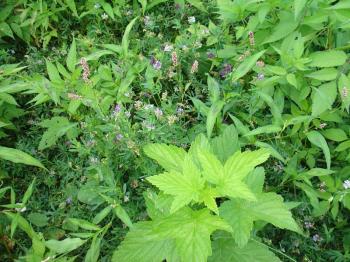
Look, a raspberry and blooming alfalfa
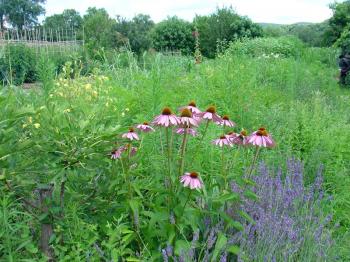
Lavender and echinacea, from here I can go no further
Even entering the garden requires navigation and I’m thankful for the lavender and echinacea blooming vigorously at the upper corner for providing a point of orientation. In the coming days I’ll re-establish the paths and fold over the intentional biomass, allowing it to rot into plant beds intended for nomadic urban seedlings. What is amazing is that under 120 cm of plant-matter, the previously mulched beds remained intact and free of weeds (I mean biomass), convincing me even more of the efficacy of my permaculture absentia, a garden that can thrive without me.
debra at 14:09 | Comments (0) | post to del.icio.us

